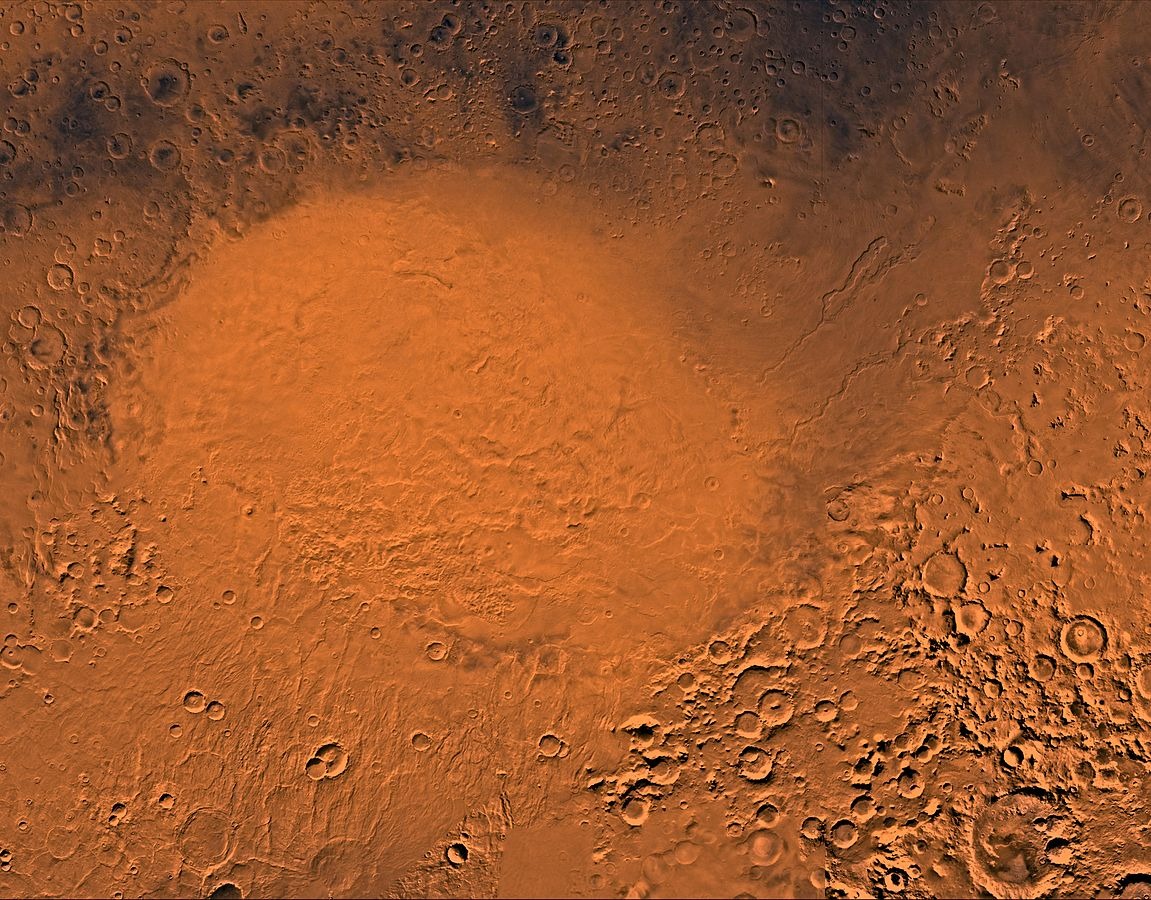
Hellas Planitia, often referred to simply as Hellas, is a crater on the planet Mars named after Greece. It was originally discovered in 1867 when viewed through a telescope on Earth.
According to NASA, Hellas Planitia spans approximately 1,400 miles (2,300 km) in diameter, and delves into the deepest recesses of Mars’ topography, making it one of the most expansive impact craters within the entire solar system.
Hellas has been proposed as a possible site of ancient ice-covered lakes on Mars.
Features of Hellas Planitia
As stated by NASA, accurately determining the precise diameter of the ancient Hellas basin presents challenges due to substantial sections of the rim being absent in the northeastern and southwestern directions. Compounding this, significant patera or low-lying volcanoes (such as Tyrrhena, Hadriaca, and Amphitrites) are situated along or close to the rim, leading to the partial burial of preceding impact remnants by their lava flows.
Extending beyond the rim, a series of expansive, curved escarpments that face inward remain, suggesting potential remnants of multiple rings encircling the basin. The landscape of Hellas further comprises intricate characteristics: fluvial channels converge into the basin, while the plains themselves exhibit a complex amalgamation of fluvial, lacustrine, glacial, eolian, and volcanic deposits.
Frequent occurrences of dust storms are a hallmark within the basin, contributing to its dynamic nature and the ongoing processes that shape its unique features.
Potential presence of water
Using topographic, morphologic, and stratigraphic evidence, scientists Johnnie N. Moore and D.E. Wilhelms proposed that “ancient water-laid sediment is the dominant component of deposits within Hellas Planitia.”
In a later 2008 study, radar images from the Mars Reconnaissance Orbiter’s SHARAD radar sounder revealed that lobate debris aprons in three craters within Hellas Planitia’s eastern region could actually be buried glaciers of water ice.
These possible ice deposits, covered by dirt and rock layers, measure about 250 meters (820 feet) thick in the upper crater, and around 300 meters (980 feet) and 450 meters (1,480 feet) in the middle and lower levels respectively. Scientists believe these glaciers formed as snow and ice accumulated on higher ground, flowed downhill, and now remain protected by a layer of debris and dust, with surface features shaped by deforming ice.
The perfect spot for a future Mars colony?
According to research published in the Journal of the Washington Academy of Sciences, lava tubes situated within Hellas Planitia could one day house astronauts who land on the Red Planet.
After scrutinizing 1,500 images captured by the Mars Reconnaissance Orbiter, the scientists determined that the lava tubes possess the potential to be enclosed, enabling astronauts to utilize technology for heating and crafting a habitable atmosphere.
“The lava tubes … could be used as natural radiation shelters and habitats for a crewed mission to the planet,” the study reads. “It would also protect them from the bombardment of micrometeorites … and extreme temperature fluctuations.”
Name
Notable for its expansive dimensions and distinctive light hue that contrasts starkly with the surrounding terrain, Hellas Planitia was among the earliest Martian features observed through telescopes from Earth.
Prior to Giovanni Schiaparelli assigning it the name “Hellas,” derived from the Greek term for Greece, the feature was known as Lockyer Land. This name was bestowed by Richard Anthony Proctor in 1867 as a tribute to Sir Joseph Norman Lockyer, an English astronomer.
Lockyer’s work with a 16 cm (6.3 in) refractor led to what was considered “the first truly accurate representation of the planet” according to E. M. Antoniadi.
See all the latest news from Greece and the world at Greekreporter.com. Contact our newsroom to report an update or send your story, photos and videos. Follow GR on Google News and subscribe here to our daily email!



